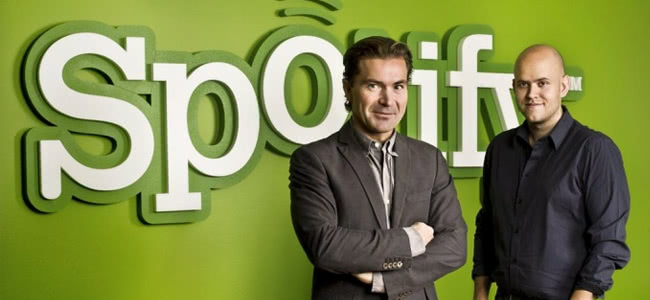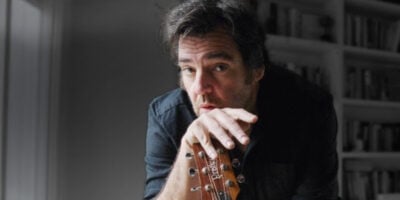When Thom Yorke and Nigel Godrich of Atoms For Peace/Radiohead fame publicly pulled their music from Spotify in protest, proclaiming that the music streaming service was “bad for new music” with a royalties model that pays artists “fuck all”, it stirred an industry-wide conversation over the Swedish-based platform’s business model.
An issue spotlighted just as IT majors Google and Sony launch their new music subscription streaming services – named Google Play Music All Access and Music Unlimited respectively – into an already very crowded Australian streaming market.
As the streaming boom increases Down Under, with Spotify clearly at the forefront, Australia’s royalty collecting agency APRA|AMCOS has added their voice to the chorus of those concerned about the streaming service’s business model; warning they need to “fix” their royalty schemes or else they will “fail” individual artists even as it benefits labels and industry figures, as The Financial Review reports.
While music streaming services are helping combat music piracy, encouraging consumers who had grown accustomed to the convenience of illegal downloading to make the switch to cheap streaming subscriptions, the artists and musicians who supply the ‘product’ are still only getting a pittance in royalties. “The investment model and the way artists are compensated in such an environment must be addressed if we want to see artists thrive.” – Andrew Harris, APRA
It’s a situation that “needs to be fixed,” says APRA|AMCOS principal analyst Andrew Harris. “The investment model and the way artists are compensated in such an environment must be addressed if we want to see artists thrive and continue making new music and maintain a long-term career,” he said.
It’s a problem that’s likely to exacerbate as the popularity of streaming models mean they begin to dominate the market, as they already have in Spotify’s home country of Sweden, with Yahoo 7 Finance reporting that streaming services now account for 70% of the market.
As these services grow, “individual artist returns [will be] diluted and spread over a much longer period of time than traditionally seen – even if they end up being the same in the long run,” says Harris.
A recent example that highlights the issue is that of US-based songwriter and Cracker frontman, David Lowery, who recently revealed that he received a measly $16.89 from one million plays of his song ‘Low’ on internet radio service Pandora, while 116,260 plays on Spotify resulted in a pay cheque of $12.05 for Lowery.
In a direct response to musicians’ concerns about the royalties model of their streaming service, Spotify – which currently caters to 24 million customers worldwide (though not all of them paying) – issued a statement noting that it has “already paid $500 million to rightsholders so far and by the end of 2013 this number will reach $1 billion. Much of this money is being invested in nurturing new talent and producing great new music.”
The streaming service currently pays 70% of every dollar to the music industry to obtain the rights to stream artist catalogues – a similar rate to Apple’s iTunes store – and claims its running at a potential loss in order to win a long game that will benefit an industry that’s still hurting from the fallout over the boom of digital music piracy.
“Right now we’re still in the early stages of a long-term project that’s already having a hugely positive effect on artists and new music,” reads their statement; “Spotify’s goal is to grow a service which people love, ultimately want to pay for, and which will provide the financial support to the music industry necessary to invest in new talent and music.” “Artists have very understandably wanted to ensure that this growth of streaming services is good for them. We are confident that it is.” DA Wallach, Spotify
Unlike the concerns of Atoms For Peace and APRA|AMCOS, who say that the current streaming service model is broken and unsustainable, Spotify’s artist-in-residence DA Wallach likens the royalties issues to growing pains. “As with any major change in the distribution model of music, artists have very understandably wanted to ensure that this growth of streaming services is good for them,” he says. “We are confident that it is.”
“The same sort of conversation surrounded iTunes when it was first growing,” says Wallach, while telling theMusic that he was disappointed with Atoms For Peace’s very public protest. “I sympathise with their intention to support artists… [but] I think it would be much more productive to help explain how the service works, rather than distorting it,” he says. “They neglected a lot of the evidence and had a disregard for the details.”
But an additional layer to the debate is Nigel Godrich and Thom Yorke’s point that this growth will better service major labels with big back catalogues rather than independent, emerging artists. A concern echoed by Nick O’Byrne, General Manager of the Australian Independent Record Labels Association (AIR) who tells theMusic that ” you can be sure that the majors try to use their power to force considerably better terms than what indies get.”
“It’s not a secret that the major labels own 18 percent equity in Spotify. Merlin, which represents many of the world’s most important indie labels, owns 1 percent of Spotify. Unfortunately this means that every single piece of revenue paid to a streaming service like Spotify as a result of independent content is indirectly adding value of the majors’ equity,” explains O’Byrne.
“The majors know that no one can start a viable digital music platform without their content and as a result they use their considerable power to shape the digital landscape and influence the business practices of streaming services,” he attests. “When a large company leverages its artists’ content for an advance or equity, then the fair flow of royalties becomes very hard to trace and artists invariably miss out.”

































